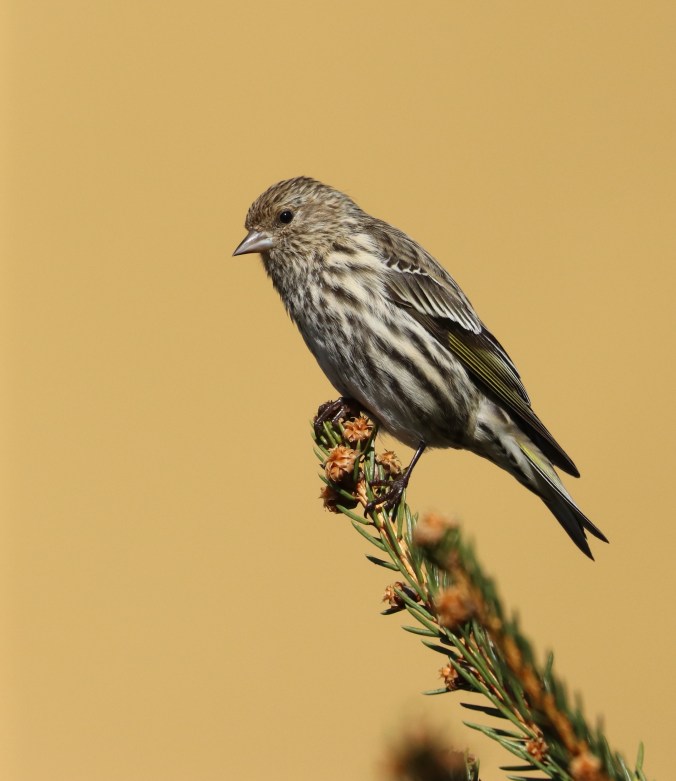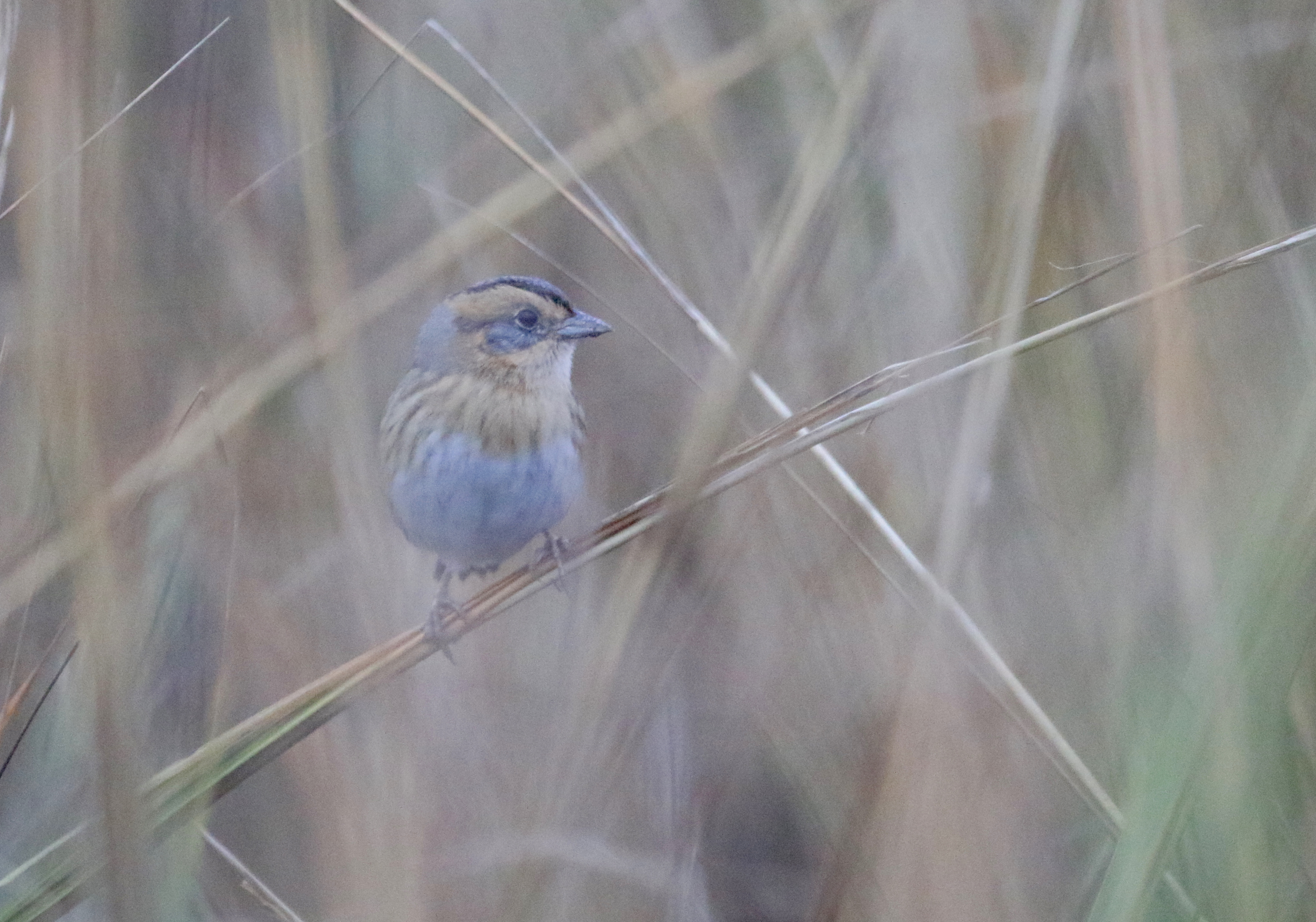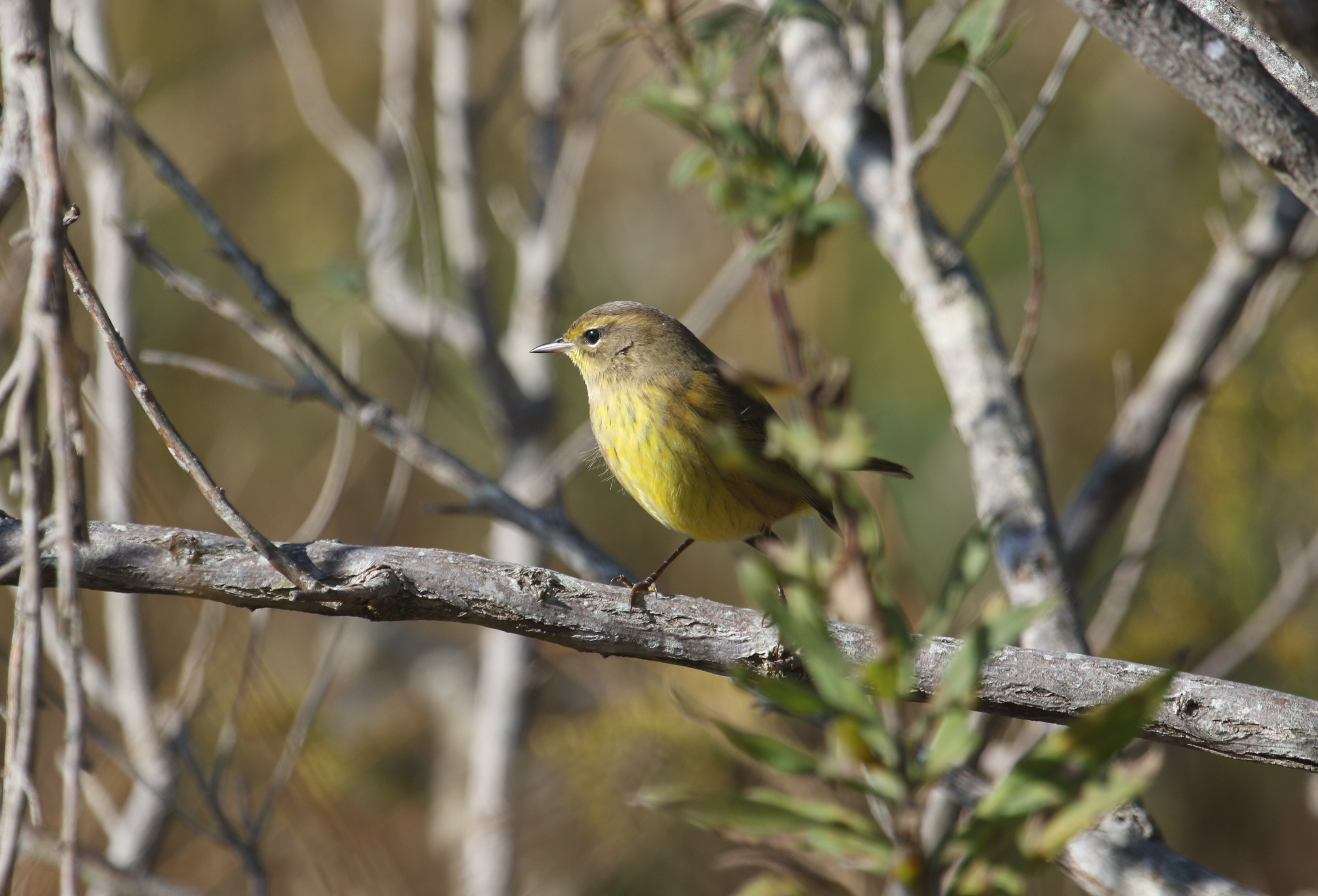Many species of birds, including raptors, warblers, waterfowl, shorebirds and sparrows migrate twice each year, south in fall, north in spring. Not all birds migrate to the same places each year though. Some birds that breed in the boreal forests of the north come as far south as the Mid-Atlantic states only occasionally, after an absence of several winters. These irregular southward migrations are known as irruptions. Unusually large numbers of several of these “irruptive” species have reached Virginia this winter, including such beautiful birds as purple finches, red-breasted nuthatches, and evening grosbeaks.

Purple Finch
Other irruptive species include boreal finches, like pine siskin, red and white-winged crossbills, common and hoary redpolls, and pine grosbeaks, as well as certain species of owls and raptors, such as rough-legged hawk, northern goshawk, and snowy owl. Black-capped chickadees also irrupt. These northern species rarely all come south in the same years, but it is not uncommon to have years when multiple species have large coordinated movements.
Irruptive birds move south when there is not enough food to support their populations in the north. The finches, red-breasted nuthatches and black-capped chickadees fly south because of bad conifer cone crops in the boreal forest. Snowy owls, on the other hand, seem to irrupt in years when their prey, lemmings, are particularly abundant. While these irruption triggers appear contradictory, they really are not. In both cases, relative scarcity of prey to predators causes a food shortage. The snowy owl population explodes from the plentiful food to the extent that the lemming population can no longer support them all come winter, so they come south in search of food.

Pine Siskin. Photo by Drew Chaney.
Irruption is closely tied to a cyclical fluctuation in the seed crops of trees the birds depend on as winter food sources. Birches, alders and conifers in the boreal forests— all important food sources for irruptive songbirds — do not bear equal seed crops every year. “Mast” years when lots of seeds are produced are followed by several years of poor seed production. This appears to be an evolutionary strategy to limit the populations of creatures that eat the trees’ seeds to ensure the maximum possible number of seeds survive. In good seed crop years, seed eaters do well, and their population expands. When the next year’s crop is poor, there’s even less food for each animal than there would have been if the population hadn’t grown the year before, and the population falls. Then, when the next good year comes, there are not enough animals to fully capitalize on the seed crop, and some seeds escape. Oaks, hickories, and beeches in the deciduous forests of the East have similar cyclical fluctuations in seed production.
The winter of 2018-2019 is an irruption year for many species of boreal birds. Red-breasted nuthatches started moving south into Virginia as early as August. I saw my first of the season on August 19th in Sussex County. By September they were abundant throughout the state, with several migrating individuals being observed each day at the Rockfish Gap Hawk-watch in Augusta County. Starting in September and October, the nuthatches were joined by large numbers of purple finches and pine siskins. Numbers of these three species dropped significantly by December, but they remained present throughout the state. Many evening grosbeaks and even a couple of common redpolls have also been found in Virginia this year.
Few of the irruptive finches are as beautifully colored or as interesting as the evening grosbeak. Evening grosbeaks were fairly rare in eastern Canada over 100 years ago. Their population exploded about 60 years ago, which corresponded to a major outbreak of their preferred summer food — the spruce budworm. During the mid to late 20th century, they irrupted in huge numbers, sometimes with hundreds in Virginia at once. Since then, their population in the East has crashed, possibly due to habitat reduction from logging in the boreal forest, increased diseases, or decreased spruce budworm populations. As the evening grosbeak population has declined, they’ve irrupted in smaller numbers. So far, this winter has been relatively great for them though, with many having been seen at feeders around the state.

Evening Grosbeak
Bird feeders are a particularly good way to see some of the beautiful finches that will be visiting our region this winter. Almost all of them like black-oil sunflower seeds. Pine siskins and redpolls — if we should be lucky enough to have more of them this winter in Virginia — particularly like nyjer or thistle seed. My brother and I recently put up a large platform feeder full of black-oil sunflower seeds in hopes of attracting an evening grosbeak, as they apparently prefer platform feeders to tube feeders. In all probability, we won’t see one on our feeder this winter, but you never know!
Sources
Pittaway R. (2014, September 20). Winter Finch Basics. Retrieved from http://www.jeaniron.ca/2012/winterfinches.htm
Pittaway R. (2018, September 20). Winter Finch Forecast 2018 – 2019. Retrieved from http://jeaniron.ca/2018/wff18.htm
Ehrlich P. R., Dobkin D. S., & Wheye D. (1988). Irruptions. Retrieved from https://web.stanford.edu/group/stanfordbirds/text/essays/Irruptions.html
Shaw D. W. Bird Irruption: A Sudden Surge of Birds. Retrieved from http://www.birdsandblooms.com/birding/birding-basics/bird-irruption-surge/
Cornell Lab of Ornithology. Evening Grosbeak Life History. Retrieved from https://www.allaboutbirds.org/guide/Evening_Grosbeak/lifehistory
Mortensen R. (2012, November 7). Birders Can Contribute to Evening Grosbeak Science Right Now! Retrieved from http://blog.aba.org/2012/11/birders-can-contribute-to-evening-grosbeak-science-right-now.html
Devokaitis M. (2018, November 6). This Could be the Winter You Get Evening Grosbeaks at Your Feeder. Retrieved from https://www.allaboutbirds.org/this-could-be-the-winter-you-get-evening-grosbeaks-at-your-feeder/



